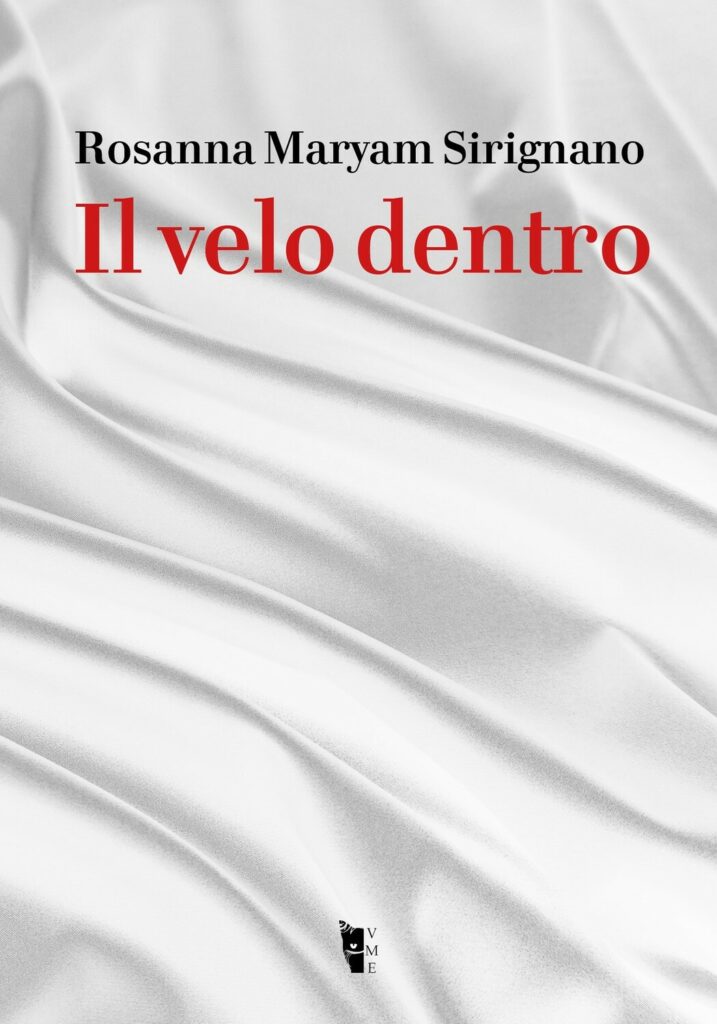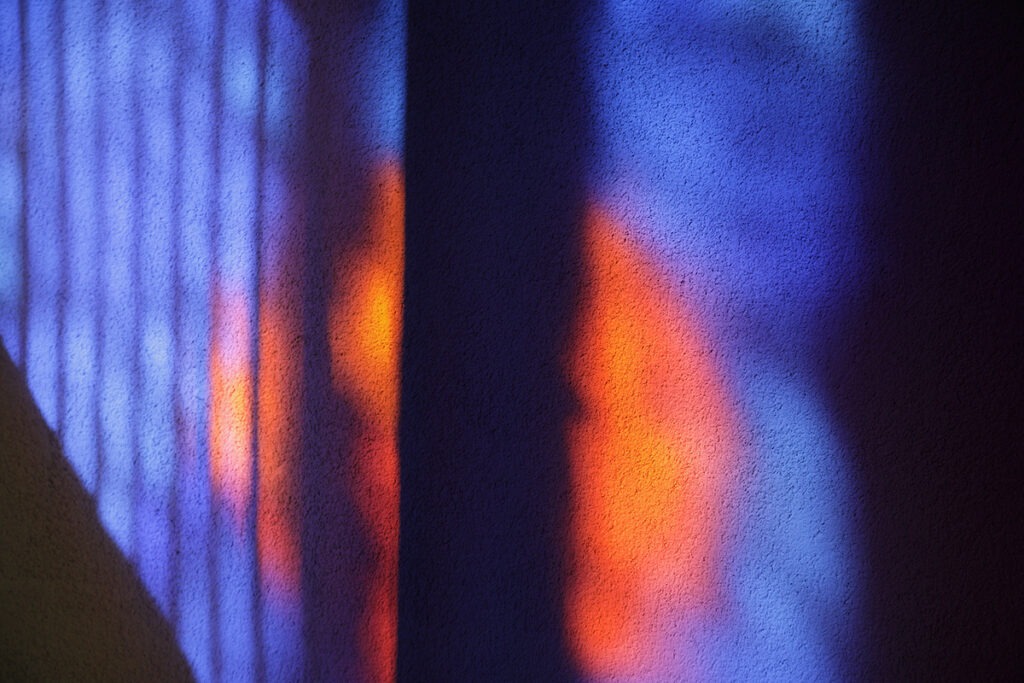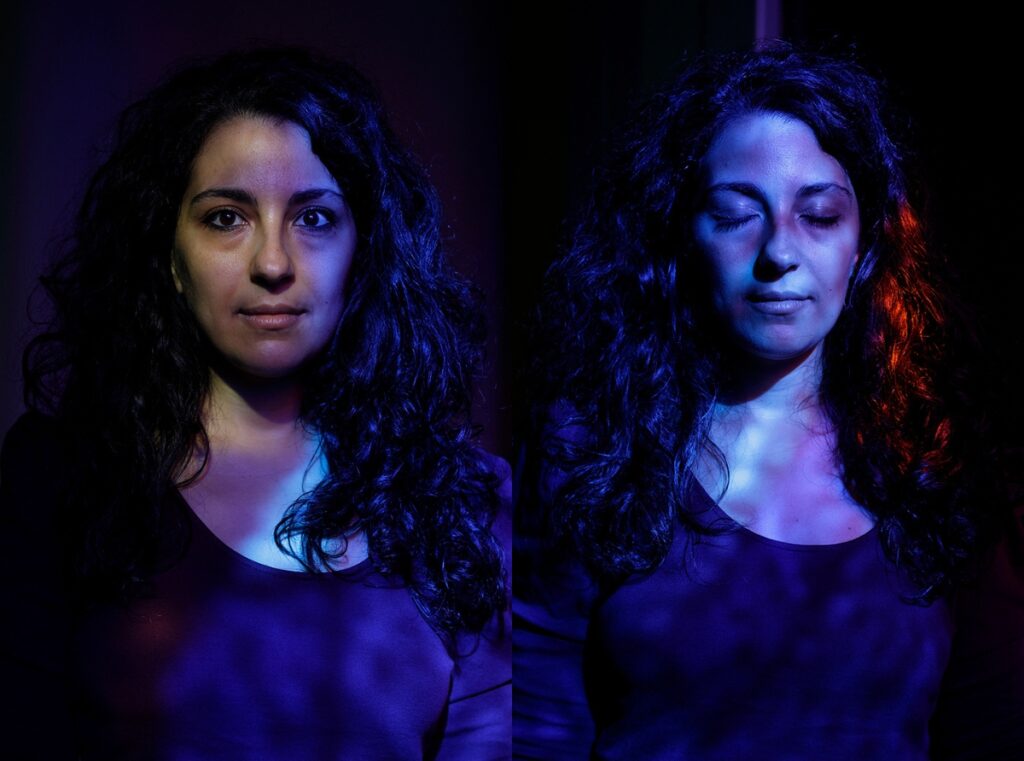“The veil resides within now, guarding the sacred whispers of faith—truths too profound for words, too elusive for reason. It dwells in the intimate chords of the heart, unreachable even by my own gaze. It is inside and outside, a reflection of my being—flesh and bone, spirit and soul. It manifests outwardly to balance the world I live in, a world still yearning for transformation. It exists outside to remind me of who I am. But it also resides within those who do not wear it.
The veil is within, and yet it does not set me free.

I will not be free as long as there are those who demand women remove it and others who insist they wear it. I will not be free while my worth is measured by how I choose to wear it. I will not be free as long as some see it as the pinnacle of devotion, and others as a banner of oppression. I will not be free until dignity and respect are no longer gauged by the fabric covering my skin. I will not be free as long as one woman’s voice is used to define all Muslim women. I will not be free until the veil ceases to be the first thing others notice about me, or the first thing they use to define me. I will not be free until it stops being wielded as a tool of propaganda—whether to enforce Islam or to vilify it.
I will not be free until Muslim women are no longer divided into veiled and unveiled, until we are all free to love without borders, until justice no longer requires us to stand guard. I will not be free until womanhood is no longer seen as a problem to solve. Until every human being, woman and man alike, is free from patriarchy’s chokehold, from poverty, from war, from violence and suffering. These burdens are far weightier than a strip of cloth.
The veil is within, and we don’t call it veil, its name is hijab. It was not a choice born of whim, but one born of faith—a compulsion that rose from within. That day, looking at myself in the mirror, framed by a piece of fabric, I whispered, “Here I am. This is truly me.” “
That is what I wrote in 2023, at the conclusion of the book The Veil Within (Il velo dentro), and this title, like a kind of prophecy, has come true.

The veil, which I had once vowed would remain firmly upon my head, now exists only within. It is deeply rooted, like an invisible weave that binds together the strings of my heart. It guards the secrets of faith and memories—those that cannot be spoken aloud or unraveled by thought. These are mysteries that resonate in the folds of the soul, far beyond the reach of any gaze, even my own.
I have broken that promise. Today, the veil no longer encircles my head because, quite simply, it causes me discomfort. Every fabric, every style, every attempt to adapt it to my body has failed. I have endured headaches, irritation, itching; I even shaved my hair in hopes of wearing it more comfortably. For 13 years, I embraced the sacrifice willingly, with joy and awareness. Each inconvenience, each deliberate movement, reminded me of my commitment to the path of faith while also challenging the perceptions of a society still in dire need of reflection and transformation.
And then came my ultimate teacher: fibromyalgia. A relentless presence, like a hammer striking without reprieve, stiffening my muscles, distorting my consciousness, bending my habits to its tyranny. Day by day, the limitations of my body grew heavier. Ignoring them, pushing through until I collapsed, could have been an option—but not mine.
Today, my choices are rooted in comfort.
Everything I do—the appointments I keep, the people I work with, the friends I surround myself with, the calls I answer, the films I watch, the books I read, the clothes I wear—is guided by this principle of ease. Comfort has become my political tool, a way to affirm my body’s right to health, to suffer as little as possible, and to choose what is right and just.
This is also an act of faith. In Islam, the body is a gift, a trust to be cherished. A renowned prophetic teaching underscores this priority: to a man who prayed and fasted day and night, the Prophet reminded, “Do not do this, for your body has a right over you.”
Comfort in clothing is not a neutral act. Choosing to dress for comfort is an act of defiance, a quiet declaration of war. It is a rejection of the invisible chains that have bound us for centuries—chains that hide in the tight seams of a dress, in heels that force us to take small, measured steps, in fabrics that caress the skin or conceal and accentuate the body solely to please the male gaze and its expectations.
Patriarchy has constructed an aesthetic of sacrifice everywhere: it demands we be beautiful but uncomfortable; visible but disciplined; elegant but restrained. Veil or no veil, this is how women’s fashion has been shaped.
Dressing for comfort is rewriting the narrative of my body. It is to my body that I ask whether a garment is suitable—not the mirror, not an advertisement, not a distorted imagination. My body is no longer an object to be admired or controlled, but a sacred place entrusted to me, and to me alone.
To choose comfort is to affirm that I exist for myself—not to be judged, defined, or approved by others. And I ask myself: how is it that I needed two muscle contractions, a jaw cramp, and the constant, all-encompassing pain to reach this new understanding?
Why is it that, among the many things patriarchy has taught us, it has also taught us to endure beyond reason—to bear more, and more, and still more, until we quietly allow ourselves to be destroyed?

I do not believe in chance. I do not believe in coincidences. When my body began to crumble under the relentless blows of fibromyalgia, a place far away was already burning. Every spasm in my body echoed like the distant thunder of a falling bomb; every stiffened muscle twisted like the bodies of children trapped beneath the rubble.
My illness was born amidst tragedy, and I cannot untangle these two seemingly distant experiences. It feels as though the pain of my sisters across the Mediterranean has poured into my body, transforming their collective suffering into an intimate struggle within me. Their cries have become my fractured breath, their spilled blood my daily labor of endurance.
Each pain is a reminder, compelling me to look beyond myself, to remember that while I fight an invisible illness, they are battling a visible enemy that crushes them. The women there are doubly imprisoned: by their womanhood, bound by patriarchy, and by their homeland, occupied, colonized, and scarred.
Is this not the same oppression that touches us all, albeit in different forms? Is it not the same system that renders us objects, that confines us, that imprisons us?
No, it is not. It is not the same oppression; it is not the same condition. Because we can repeat endlessly that we are all human beings, but history and the present continue to teach us otherwise.
We are not all the same. We have not been the same since it was decreed that men would have more freedom to move and decide than women. In that moment, we set in stone the idea that in every society, there are human beings who are worth more and who are granted more rights than others.
Thus, we accepted this as the only way to organize ourselves, to keep the world turning—by building hierarchies, fostering oppression, and perpetuating injustice.

No, we are not all the same. But we are interconnected.
And so, today, my pain is not mine: it belongs to them, just as theirs belongs to me. It is a tapestry, a thread that binds my body to theirs, my illness to their resistance. Each day, I rise with the awareness that my broken, aching body bears witness to their suffering.
I cannot—and I do not want to—heal until the world itself is healed. I cannot find peace—and I do not want to find peace—until a mother can shield her children, until a daughter no longer weeps for her mother, until a sister no longer trembles at the sound of bombs, until we are all safe and joyful in every corner of the earth.
414 days, 1 year, 1 month, and 18 days of Palestinian genocide—a reminder to us and to the world that we have failed. All of us.
